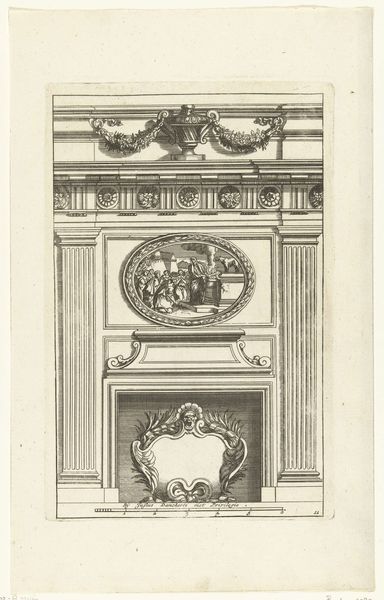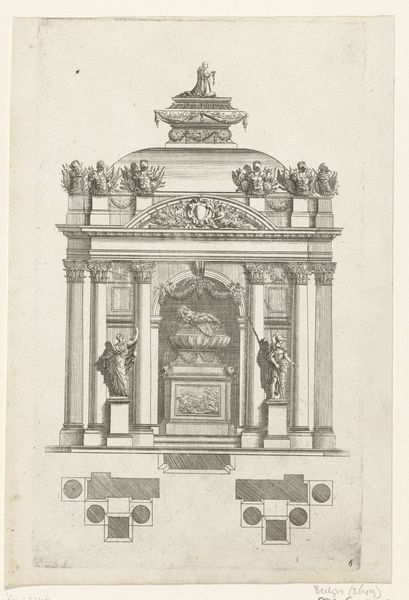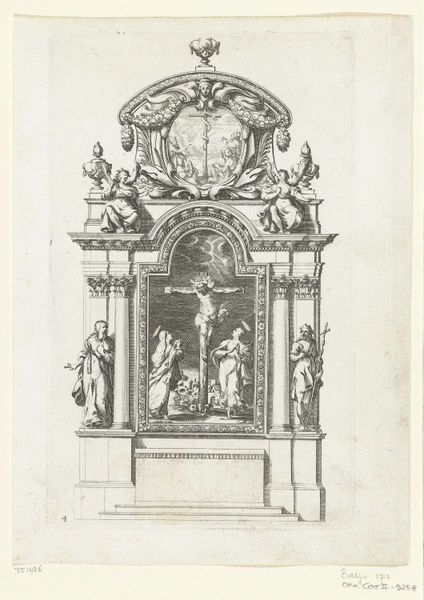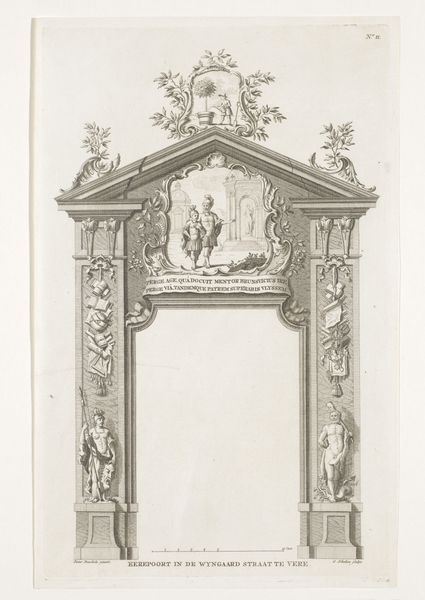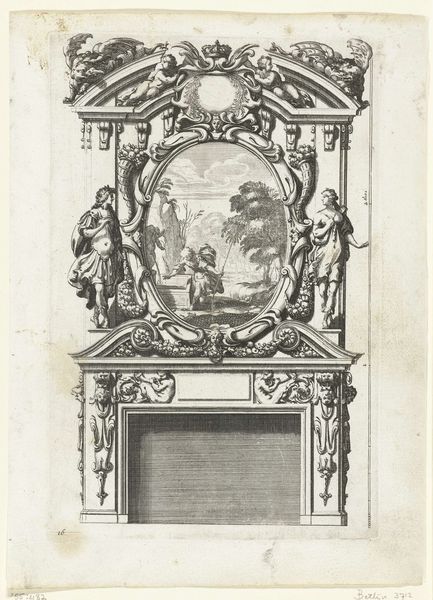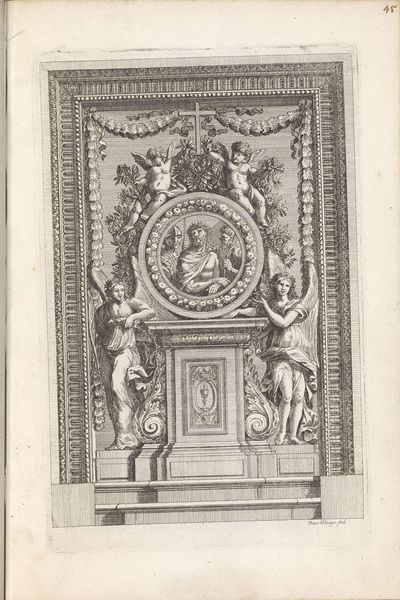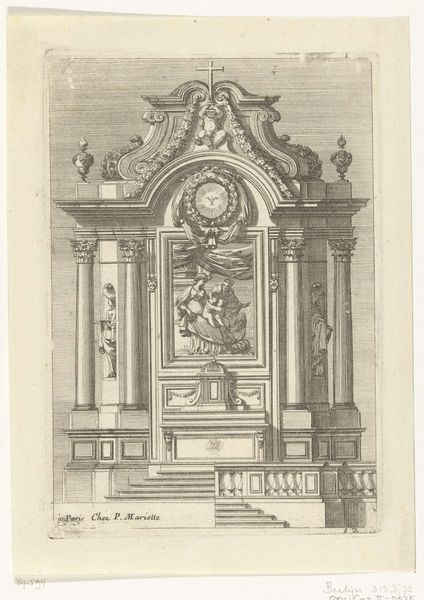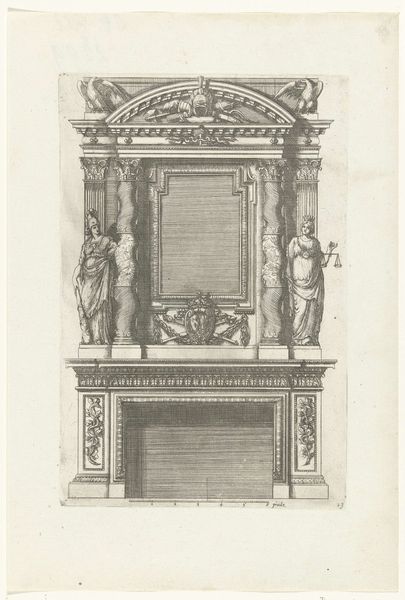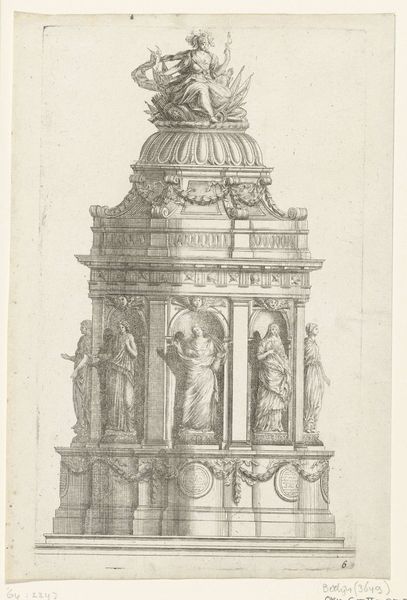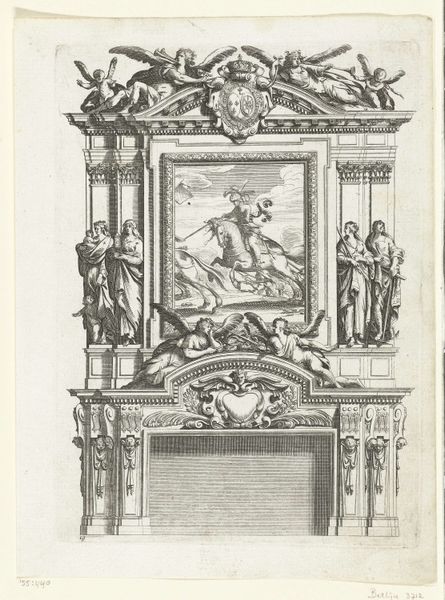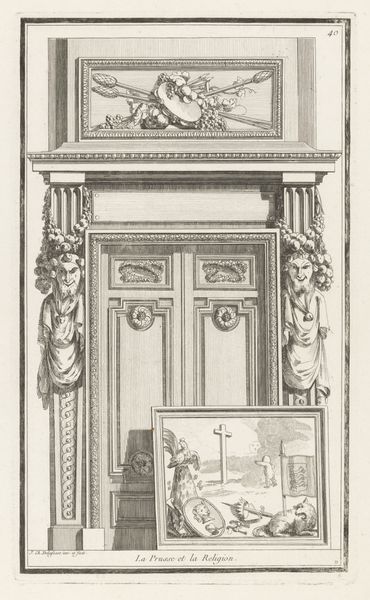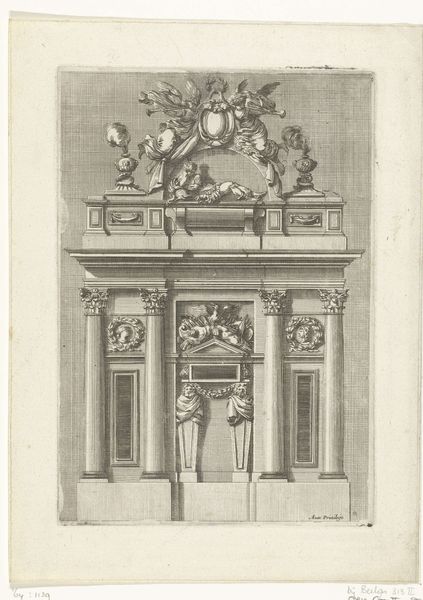
drawing, print, paper, engraving, architecture
#
drawing
#
baroque
# print
#
paper
#
line
#
cityscape
#
history-painting
#
engraving
#
architecture
Dimensions: height 374 mm, width 231 mm, height 415 mm, width 520 mm
Copyright: Rijks Museum: Open Domain
Curator: This is an engraving titled "Erepoort aan de haven" or "Triumphal Arch at the Harbor," dating back to 1751, by Caspar Jacobsz. Philips. Editor: Oh, it's quite lovely! It feels like a blueprint for a parade float. It’s light, airy, but… intensely detailed, like someone meticulously planned out a dream. Curator: Precisely. Consider the architectural structure—the strong, definitive lines form a clear frame. Philips uses the engraving medium to its full potential, creating contrasts between dense shading and areas of stark white. Editor: I’m drawn to the characters… the Neptune figure with his trident seems a little out of place with the cherubic figures riding the… hippocamps? They almost appear to be lifted from two completely different worlds. Or perhaps a slightly surreal dream? Curator: The amalgamation is intended. We're looking at a clear application of Baroque aesthetics: theatricality combined with meticulous detail. See how the composition employs iconography that conveys a celebration of maritime power, using both classical allusions and contemporary symbolism. Editor: You are so right! All that regal bearing – it hides some serious muscular detail… And did you notice all the little crowns? Look how many times they feature in the coats-of-arms lining the sides – there must be so many levels of authority on display! Curator: Indeed. These elements signify status, prestige and civic pride, speaking directly to the print’s purpose in commemorating maritime achievement. Editor: What's intriguing to me, though, is that despite the obviously celebratory function and detailed renderings, there’s an unfinished air to the whole composition... a certain lack of grounded-ness, if you will... It reminds me a bit of those unfinished Piranesi etchings, perhaps it is intentional. Curator: That effect adds another dimension to the viewing experience: prompting viewers to engage and to, in essence, “complete” the narrative suggested by Philips’ intricate visual cues. It invites reflection not only on historical power dynamics but the broader narrative of our interpretation and relationship to such iconography. Editor: All told, not just an image but a key into a past – part reality, part ambition – envisioned for an age now past. Curator: Yes, Philips’ print operates beyond simple documentation – offering a complex, layered vision.
Comments
No comments
Be the first to comment and join the conversation on the ultimate creative platform.

